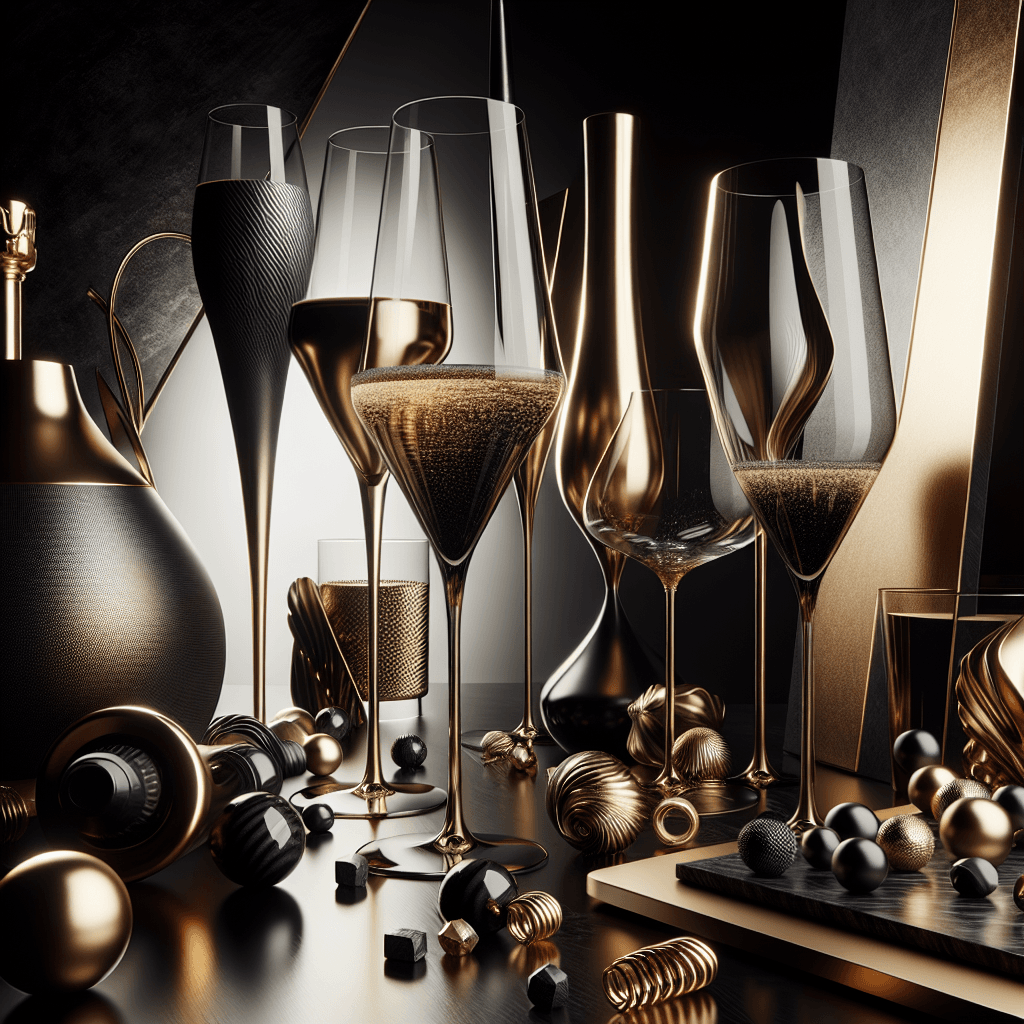How Glass Shape Affects Aroma and Bubbles
The choice of champagne glass is not merely a matter of aesthetics; it profoundly influences the sensory experience of enjoying this prestigious beverage.
- Introduction to Champagne Glasses
- The Champagne Flute: Elegance and Tradition
- The Tulip Glass: A Connoisseur’s Choice
- The Coupe Glass: Vintage Charm and Style
- Scientific Insight: How Shape Affects Champagne
- Cultural Significance of Champagne Glasses
- Choosing the Right Glass: A Reflection of Personal Taste and Occasion
Introduction to Champagne Glasses
Champagne, a symbol of luxury and celebration, deserves a vessel that complements its prestige. The choice of glass can enhance or diminish the champagne’s delicate aromas and lively bubbles, making the selection crucial for aficionados and casual drinkers alike.
The Champagne Flute: Elegance and Tradition
The champagne flute is perhaps the most iconic and commonly recognized glass for serving champagne. Characterized by its long, thin body and small mouth, the flute is designed to reduce the surface area at the top, minimizing the rate at which carbonation is lost.
- Design and Functionality: The flute’s tall shape allows bubbles to rise to the top, prolonging the effervescence and enhancing the visual appeal of the champagne’s sparkle.
- Aroma Concentration: The narrow opening helps concentrate the bouquet, allowing the subtle aromas to accumulate and intensify, providing a deeper sensory experience upon each sip.
However, some experts argue that the flute’s narrowness might restrict the development of more complex aromas, potentially oversimplifying the champagne’s character.
The Tulip Glass: A Connoisseur’s Choice
The tulip glass, with its wider bowl and slightly flared lip, offers a middle ground between the flute and the coupe. It is revered by many sommeliers and wine experts for its ability to balance the preservation of bubbles with aromatic enhancement.
- Shape Benefits: The wider bowl allows for a better appreciation of the champagne’s color and body, while the tapered top captures and enhances the nuances of the champagne’s complex aromas.
- Preferred by Professionals: Many professionals prefer the tulip glass as it provides ample space for the aroma to develop, while still maintaining a focused pathway to the nose, optimizing the olfactory experience.
This glass is particularly favored for tasting vintage champagnes, where the complexity and fullness of the wine can be fully appreciated.
The Coupe Glass: Vintage Charm and Style
The coupe glass, with its broad, shallow bowl, evokes the glamour of early 20th-century cocktail parties. Despite its association with the Roaring Twenties, the coupe is not without its drawbacks for modern champagne enjoyment.
- Historical Appeal: Popularized in the 1930s, the coupe has become a symbol of vintage elegance and decadence.
- Aroma and Bubble Dynamics: The wide open shape causes bubbles to dissipate more quickly, which can lead to a faster loss of effervescence and a diminished aroma.
While not ideal for maximizing the sensory experience of champagne, the coupe remains a popular choice for certain cocktails and as a decorative option for events seeking a touch of nostalgic luxury.
Scientific Insight: How Shape Affects Champagne
Research conducted by scientists in the field of fluid dynamics has shown that the shape of a champagne glass directly influences how carbon dioxide bubbles form and rise, which in turn affects the taste and aroma of the champagne.
- Bubble Formation: The surface texture of the glass plays a crucial role in bubble formation. Microscopic imperfections in the glass provide nucleation sites where bubbles can form and grow.
- Aroma Release: As bubbles ascend, they capture aromatic compounds from the champagne, releasing them as they burst at the surface. The concentration and intensity of these aromas are influenced by the glass’s shape.
Understanding these mechanisms helps explain why different glasses can provide distinct drinking experiences, influencing the perception of quality and enjoyment of the champagne.
Cultural Significance of Champagne Glasses
Champagne glasses are more than just functional; they are imbued with cultural and historical significance. Each style reflects different eras and social trends, from the aristocratic associations of the flute to the hedonistic flair of the coupe.
- Social and Historical Context: The evolution of champagne glasses mirrors changes in society, including shifts in dining etiquette, technological advancements in glassmaking, and changing tastes in entertainment and leisure.
- Symbolic Meanings: Choosing a particular style of glass can convey different messages, from traditional elegance (flute) to playful indulgence (coupe).
The selection of a champagne glass thus becomes a statement about personal style and historical awareness, as well as a reflection of one’s appreciation for the finer details of gastronomic culture.
Choosing the Right Glass: A Reflection of Personal Taste and Occasion
In conclusion, while the choice of champagne glass can significantly affect the drinking experience, it ultimately also reflects personal taste and the specific occasion. Whether opting for the effervescence-preserving flute, the aroma-enhancing tulip, or the stylish coupe, each glass offers a unique way to enjoy one of the world’s most celebrated beverages.
For further reading on the art and science of champagne tasting, explore authoritative sources such as the Comité Champagne.



